What Animation Software Do I Need To Learn?
In the Golden Age of animation, individuals such as Walt Disney, Ollie Johnson, Ub Iwerks, and Frank Thomas all drew their animation by hand. The technology back then involved drawing on paper fastened to peg bars, then transferred to flammable celluloid, called cels, painted, and then filmed with a camera. It worked well and timeless classics were made from this process. A person can get a good idea of how they did it by visiting the Walt Disney Vault DVD’s. These films are a great source of animation history a definite recommend to any aspiring animator.
Today, computer software is used to produce both classically drawn and CG animation. The rise of computer technology has enhanced the way the art form is created. Many animators still draw by hand using an animation light table with rotating disc and peg bar. The drawings are then scanned into the computer software program. In some cases, proprietary software allows the artists to draw directly on screen. Most use a Wacom Tablet to draw inside the software program verses on paper. Toonboom Studio is one example of animation software used for creating the 2D classical type. If 2D is your passion ToonBoom.com is a great and cost effective choice.
Types of Animation
A prospective student may wonder what animation software they need to learn to get into the industry. The best way to answer this is to first define the types of animation being used, and secondly, to establish what your focus is in the industry.
- Stop Motion Animation
- 3D Animation
- 2D Classic hand drawn animation
- Paper Cut Out
Stop motion animation, as used for the Wallace and Grommet and Davie and Goliath series, is the most challenging and time consuming of them all. Animators work with clay or plastic characters, objects, and generally hand created sets all of which have to be moved by hand (even using robotics in stop motion requires hand intervention). Meticulously they photograph each pose set by hand. At 24FPS (frames per second) or 30 FPS one can see how tedious this type of animation can really be. Individuals that work on stop motion film projects are literally getting “hands on” animation training.
3D animation, also called CG animation is created solely using the computer. All characters, lights, cameras, and sets are modeled inside the computer software, animated, and then rendered as a complete film. In 1995, Toy Story became the very first feature length computer animated film to hit the big screen. Films such as Spirit: Stallion of the Cimarron combined both 3D and 2D classical animation.
Classical animation, such as used on Pinocchio and Snow White, is the original type of animation. This art form has lots of history and was made possible in the late 1800’s with the invention of the movie camera and perfected throughout the 20th century. All animation was hand drawn, later painted, and filmed one frame at a time. Although CG has taken the movie industry by storm, in no way has it made obsolete classical animation. Many still use this type of animation for cartoons, commercials, and web graphics. There are other forms like Flash animation one can get involved with. Flash is mostly used for the web.
The type of animation software a person needs to learn depends on what form of animation they are passionate about.
- Do you like drawing?
- Do you like working with the computer?
- Do you like the hands on as with stop motion?
Types of Animation Software
Animation software is used to create such things as TV commercials, films, cartoons, interactive web sites, graphics, and video games. Perhaps you are reading this with the question ringing in your mind, “What animation software do I need to learn?” First of all, wherever you go to school the primary focus will be to learn animation. This is important so let it get embedded in your brain. Once you learn the principles it really doesn’t matter which software you use after. A person will be able to animate regardless. If an individual bounces around form studio to studio there is a good chance multiple software’s will be learned. The types of animation software available today are as follows:
- Autodesk Maya
- Autodesk 3DS Max
- Softimage
- Lightwave 3D
- Animation Master
To name a few…
The most common animation software used for making animated films is Maya. Maya is a complex but extremely powerful tool. A student will have a nice learning curve with it. Again, most schools will teach you as you go. If you are learning on your own then stay close to the tutorials. Maya animation software is also one of the most expensive. The interface is user friendly but densely populated.
3DS Max is a simpler animation software by comparison. It is highly used for the gaming industry although not limited to. The action film Lost In Space was created completely with 3DS Max. The interface is friendly and as with other programs can be altered to fit your style. This is also a pricey animation software, but as with other things, give it time and the price will come down. Another animation software used by many for gaming is Softimage. Here is a link to the price sheet for these three products by Autodesk. http://store.autodesk.com/store/adsk/list/categoryID.55928400
The choices continue with many software packages to choose from so don’t despair.
LightWave is a full 3D solution for modeling, rendering, and animation. The price range is much more feasible to the student at around $900.00. Hash’s Animation Master is also a software popular among home users which allows the individual to easily model, render, and animate. The price is $300.00. AM is a great package to use if you are going to monkey wrench with the idea of becoming an animator.
In conclusion, what gets a person a job in animation is not necessarily software skills but the following:
- Good drawing skills
- An understanding of the principles of animation
- A demo reel that shows good story telling, acting, and body mechanics.
Knowing how to use a particular software package is good but not most important. Many animation studios have their own programs an animator will learn once they get hired. The most important thing is learn animation. Computer software’s and light tables are just tools to aid the animator during the animation process. What animation software do I need to learn can be answered like this, “Whatever one the school is using, or your area of interest requires.”
What about trying these softwares and seeing their capabilities just check on them
Adobe Flash Professional
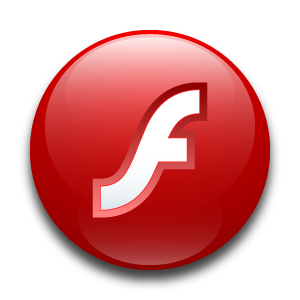 If
you are looking for features-rich software that is used for making
meaningful content then Adobe Flash is the answer. It is an animation
industry favorite and works equally well for platforms such as smart
phone, Tablets and TV. It presents an effective workflow environment and
gives enhanced control of layers. The cost is though on the higher
side, especially the up gradation costs. The plus point of using Flash
is that it lets the animator integrate many sophisticated effects to the
animation being created.
If
you are looking for features-rich software that is used for making
meaningful content then Adobe Flash is the answer. It is an animation
industry favorite and works equally well for platforms such as smart
phone, Tablets and TV. It presents an effective workflow environment and
gives enhanced control of layers. The cost is though on the higher
side, especially the up gradation costs. The plus point of using Flash
is that it lets the animator integrate many sophisticated effects to the
animation being created.Toon Boom Animate
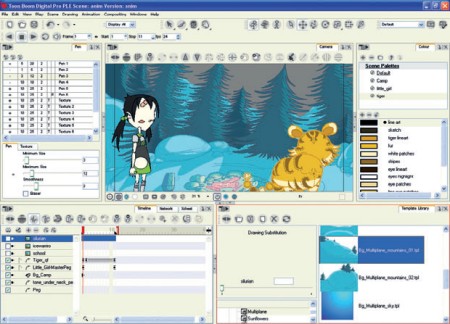 My
personal favorite, this software is a good tool for creating Flash
animation. It has some really cool features such as flexible rigging
techniques, sync of Xsheet and Timeline, a variety of vector effects and
ability to export to different formats such as SWF, FLV and Quicktime
makes it a loved tool for animation. The use of cameras to create 3D
environment in 2D software, adding drop shadows and tweening are some of
the most enhanced features of Toon Boom. The environment it provides is
very similar to traditional animation, hence, the animator enjoys it
even more.
My
personal favorite, this software is a good tool for creating Flash
animation. It has some really cool features such as flexible rigging
techniques, sync of Xsheet and Timeline, a variety of vector effects and
ability to export to different formats such as SWF, FLV and Quicktime
makes it a loved tool for animation. The use of cameras to create 3D
environment in 2D software, adding drop shadows and tweening are some of
the most enhanced features of Toon Boom. The environment it provides is
very similar to traditional animation, hence, the animator enjoys it
even more.Anime Studio
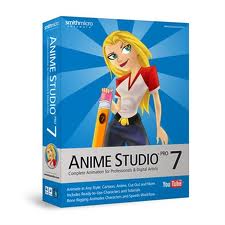 Anime
Studio also known as Moho is an animation software that makes animation
both fun and easy at the same time for beginners as well as animation
professionals. The bone rigging, squash and stretch and drawing
techniques are up to-date and easy to learn. The whole environment is
user-friendly and has been successful in producing quality animations
till date.
Anime
Studio also known as Moho is an animation software that makes animation
both fun and easy at the same time for beginners as well as animation
professionals. The bone rigging, squash and stretch and drawing
techniques are up to-date and easy to learn. The whole environment is
user-friendly and has been successful in producing quality animations
till date.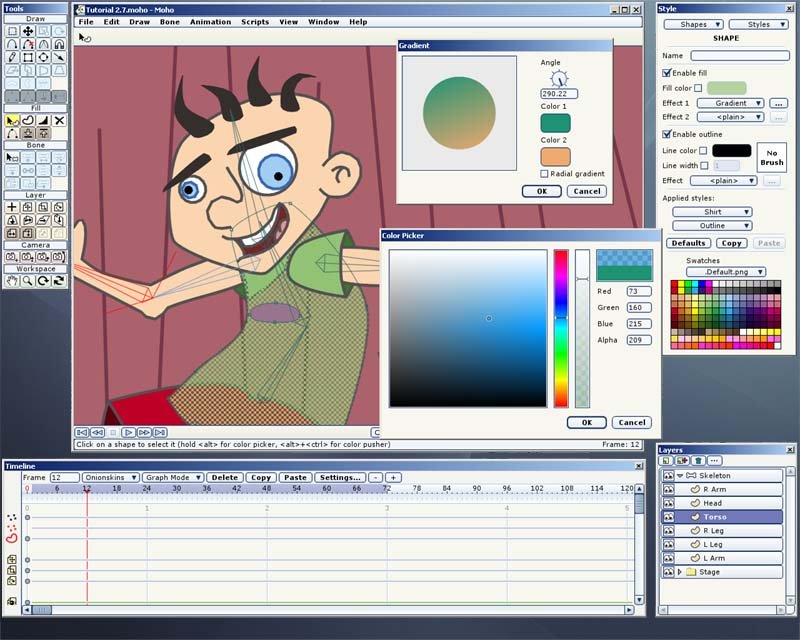
TVP Animation
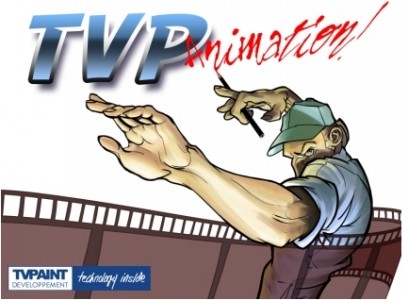
TV Paint animation is one of the leading software used for producing animation and drawing. An entire movie can be created using this software. Different drawing methodologies such as pencil color, water coloring and pen brush are modeled in this software.
Over the years TVP has produced some very beautiful animated movies that make a person marvel at the beautiful effects it can add to a hand-made drawing. Drawings are then animated using frames. It works both with Windows and Mac operating systems.
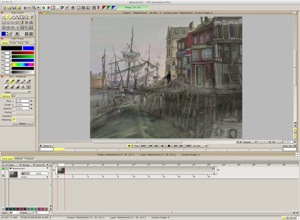
3D Studio Max
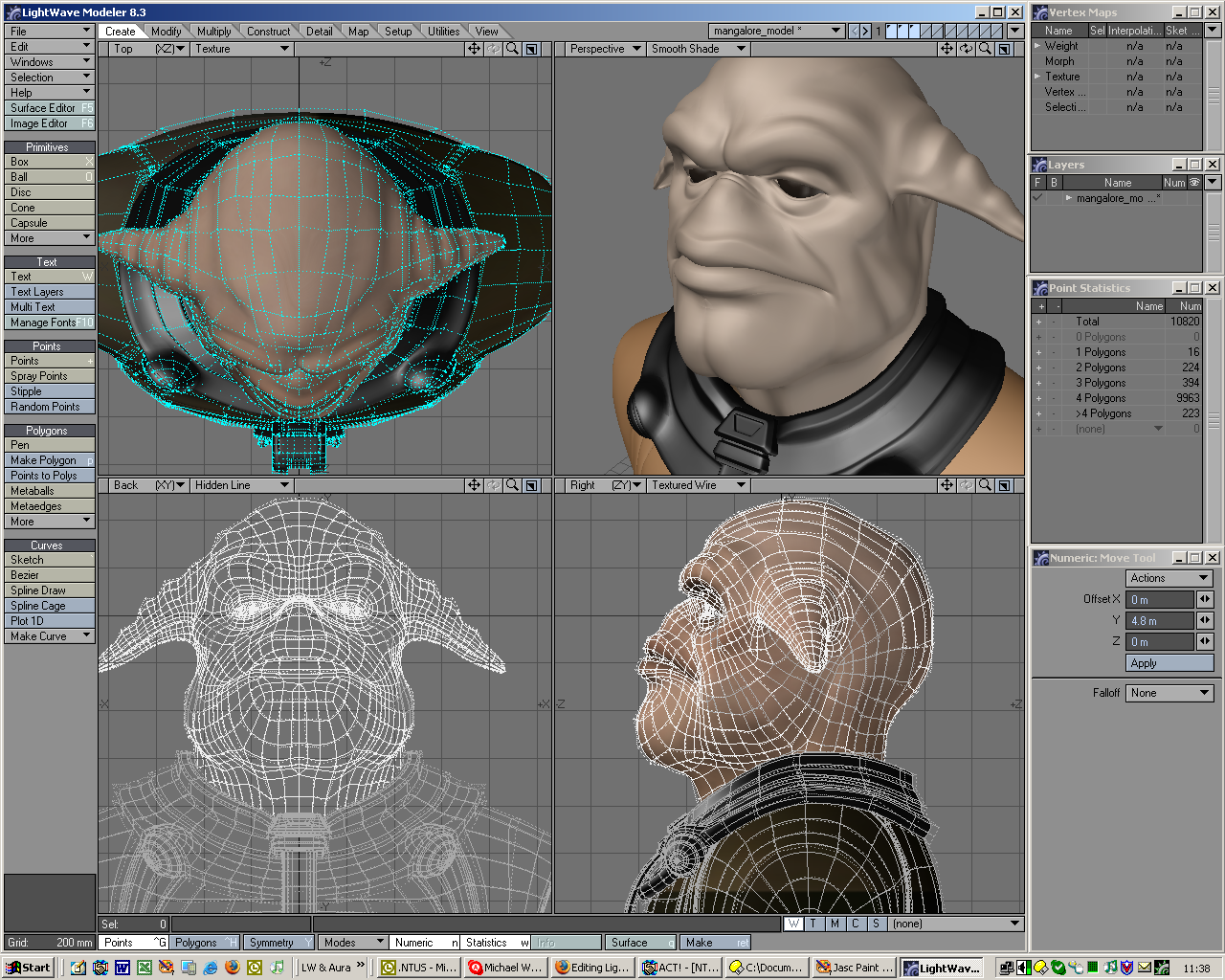
This 3D animation, modelling and rendering
software can create worlds within it. There is no limit to the many
tools it provides and the versatility that it lets the animator work
with. Not only animators, but game designers, graphic artists and
professionals from many other fields use this software for tasks like
game designing, graphic designing, logo designing, interior design and
the list goes on. The mapping and meshing allows artists to create true
to life objects and things that once could only be imagined. Create
lovely environments and animate them to make them look as good as real
(sometimes even better). The software has been used in many movies,
Harry Potter, Final Destination, Iron Man, A Cinderella Story (What?
Yes! In some parts, of course) and a lot more!!!
Maya
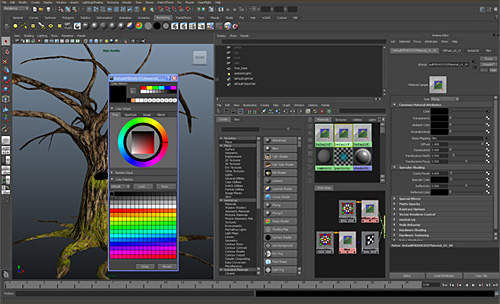
Maya or “Illusion” is also a 3D graphic
software used for creating 3D visuals, animations, interactive 3D
applications and a lot more! Like 3Ds Max, Autodesk Maya gives user the
freedom to create anything that he/she desires. Maya has truly been made
for the increasing demands in today’s film and television requirements.
Like 3Ds Max, Maya is also a bit technical and the user might need to
learn it by taking a course or something (it all depends on the
capability of the user, not strictly advised to all though). Lilo and
Stitch, Spiderman, X-Men, Final Fantasy and dozens more are some of the
greatest productions in which Maya was used.
Adobe After Effects
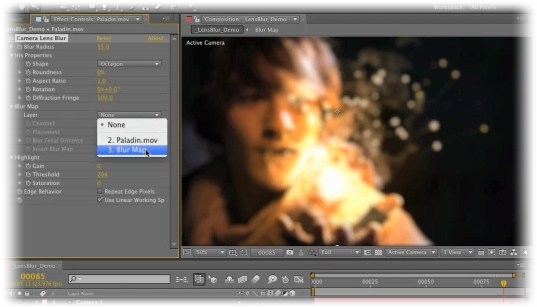
This 2D and 3D compositing software
provides a great platform for animation. After Effects, as the name
suggests allows the user to create awesome visual effects and motion
graphics. It enhances the overall visual feel of what has already been
produced. By using cameras, lights and other tools, one can make a 2
dimensional scene look 3 dimensional. So whether you want to give a
spell-bounding or magical feel to your scene, After Effects is the right
choice!
Some of the animation software that might not be very popular and loved, but still can provide the animator with some more options to work in are:
CreaToon
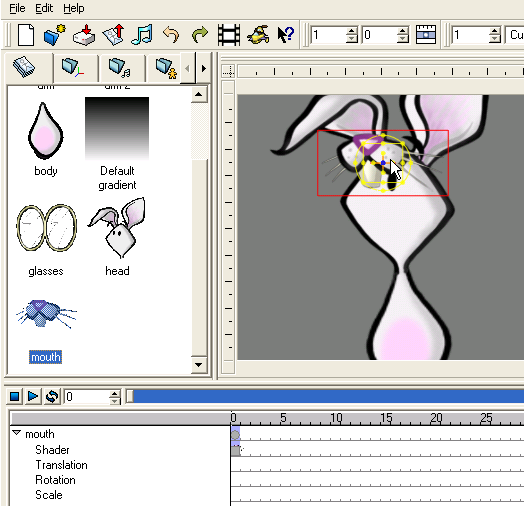
Swish Max 4
The software is used to create amazing
flash animations and contains hundreds of preset multimedia effects and
ready-made components and vector shapes. You can save your creations in a
number of formats such as EXE, video, flash or GIF animations.
Moreover, it allows for powerful scripting language too. On top of that
its price is relatively low as compared to other products of the same
cadre.
LightWave 3DWith the popularity of 3D graphics on the rise, LightWave is a very helpful solution for developers to meet the market demand. The support for clip maps through different enhancements, camera rig types and flexible compositing through linear color space workflow is provided. Different data exchange enhancements and mind-boggling real-time and gaming tools justify the higher purchase and upgrading price.

CrazyTalk Animator
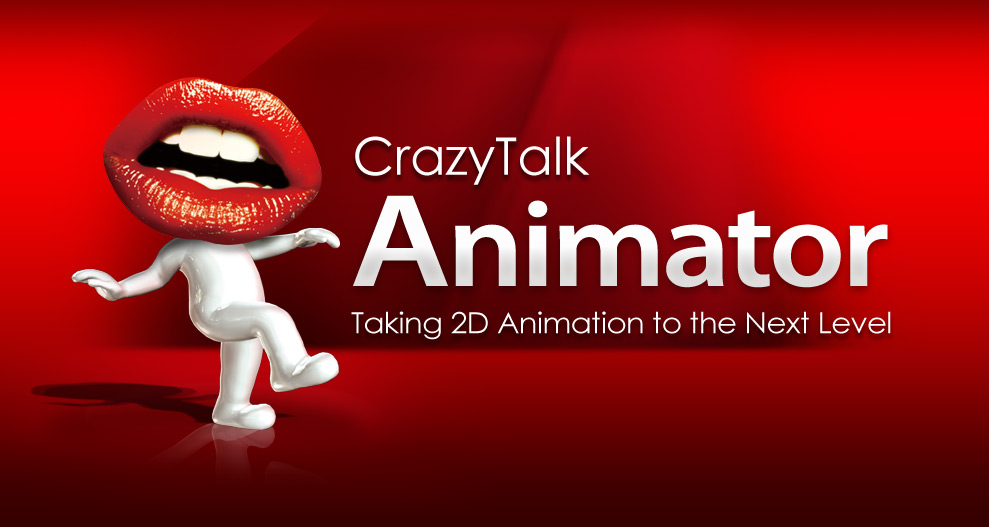
2D
Animation Programs
The following animation programs are
all primarily designed to function in 2D.
Toon
Boom Studio 4
Toon Boom Studio is one of the best
animation programs for internet users, and is well known for its depth and
quality of their technical support. It’s a solid application that is made for
animators, by animators. This makes it a perfect choice for creating your own
original cartoons.
Animationish
Developed with the premise that
animation programs do not have to be overly complicated to produce effective
and fun cartoons, Animationish is a great application to learn the basics of
cartoons.
Flip
Boom
The producers of Toon Boom created
this animation program with kids in mind. It’s a simple program to get the hang
of, with basic drawing inputs and previous/next frame navigation. Even the output
controls have been slimmed down to make it as easy as possible for kids to
grasp.
Flash
Adobe Flash has been around for a
long time in one form or another. It has the benefit of being easy to use, but
is missing some key toolsets that would truly benefit animators. That’s why
Flash does not currently get top billing from most animation studios.
If the price does not scare you away
you’ll find that Flash can provide a great interactive experience but is not an
ideal animation program for cartoons.
After
Effects
While it’s primarily used for
compositing and effects, After Effects can be used to create animation. It’s
clearly overkill to use this program just for animation, but the fact that you
can means it must go on this list. Frankly, I can think of several things I
would rather do with a thousand dollars.
Pencil
Free, les-stooges.org | Download Pencil
Pencil is an interesting animation
program in that it allows for both vector and bitmap drawings. It’s as if the
drawing tools of Photoshop were combined with the powers of Flash. The software
itself has been pared down to its most essential elements, meaning it’s an
excellent introductory animation program.
Synfig
Free, synfig.org
| Download
Synfig
The creators of the Windows-only
Synfig have ambitious goals of their animation software being used to create
feature film quality animation. After watching an impressive demo it looks like they’re not far
away from their goal. Synfig can create complicated lighting and camera
effects, it’s up to you, the animator, to use them properly.
CreaToon
Free, creatoon.com
| Download
CreaToon
Another Windows-only animation
program, CreaToon uses a cut-out animation process, similar to Toon Boom. The
application itself seems a bit less polished, but the ability to use bitmap
images within the program is useful.
Toon
Boom Digital Pro
As internet animation programs go,
Toon Boom Digital Pro is strictly for professionals, as indicated by its price
tag. They have the credentials to back it up though. Besides the extensive list
of TV and movies created with Toon Boom Digital Pro, internet
sensations Adam
Phillips and Bernard Derriman also use this animation program.
Toon
Boom Studio Express
This pared down version of Toon Boom
Studio is a good introductory animation program for newcomers. There are
limits, however, especially since only one scene can be created at a time. You
can easily purchase Express and then upgrade to Studio later if you find that
you need the extra punch.
SWiSH
SWiSH was initially created to take
advantage of the open .swf format established by Flash. Originally billed as a
cheaper Flash alternative, SWiSH has become a solid Windows-only text animation
program in its own right, allowing you to easily create impressive swooping
effects and export them for the internet.
Ulead
Gif Animator
Gif Animator is truly old school
animation software. Animated Gifs have, in general, are almost extinct on the
internet as Flash and DSL
speeds have become almost ubiquitous. This is a Windows-only application, and does not work in Vista. If you want to party like it’s 1999, this animation program will get you in the mood.
speeds have become almost ubiquitous. This is a Windows-only application, and does not work in Vista. If you want to party like it’s 1999, this animation program will get you in the mood.
TV
Paint
While TV Paint was a solid animation
program before, when they purchased the Mirage name and rolled the two
applications into a single animation program simply called TV Paint many
animators rejoiced. TV Paint is solid production level animation software, and
there is a professional version available for 950�.
This truly exciting animation
program comes to us from the beautiful country of Denmark. Plastic Animation
Paper is meant to be a replacement to a traditional light table/paper animation
combination. This software is currently available for Windows and Linux,
however they are diligently working on a version for the Mac. There is a free
version for you to try, as well as a professional version for 695�.
Motion
Studio
This Windows-only is a quirky little
program designed only to create .exe files. This could be useful for a
slideshow or looping display, however the animation part of the program is
relatively limited.
Pro
Motion
Pro Motion is a Windows-only
animation program designed for close-up pixel manipulation. This makes it ideal
software for building sprite-based characters such as those found in video
games.
3D
Animation Programs
For the most part 3D is considered
to be software for professionals, although the following applications are
seeing use at home and open-source movies.
3D
Studio Max
3D Studio Max wins the dubious honor
of being the most exspensive animation software program on this list. You many
notice that this and the next program, Maya, are both owned by Autodesk. While
it’s a popular program for industrial designers and architects, it’s also found
a core following in film and video games.
Maya
Increasingly Maya is becoming the 3D
tool of choice for film, as it allows for a vast array of shading and lighting
effects. Maya is also extremely customizeable, allowing for easy integration
with third party software. This makes it an easy choice for animation
production houses. There’s a Personal Learning Edition that you can download for free, which we recommend if you’re
considering this software.
Lightwave
Lightwave is a truly professional 3D
program, used to create many movies and TV special effects. Tackling Lightwave
is not something you should enter into lightly. Fortunately there is a 30 day
trial for this animation software, which we highly recommend.
Blender
Free, blender.org
| Download Blender
Blender has recently made a pretty
impressive splash when it was used to create the impressive cartoon Big Buck
Bunny. This entertaining and professional cartoon should be all the
reason you need to try out this open source animation program.
Anim8or
Free, anim8or.com | Download
Anim8or
Truly a personal labor of love, this
3D animation program is the creation of Steve Glanville, a software engineer
for NVidia.
Anim8or, besides being difficult to spell, is a Windows-only application. It is
not professional level animation software, but it was never intended to be.
Regardless, it is a good introductory animation program, especially if you’re
interested in learning how to animate in 3D.
Swift
3D
The original intention of the Swift
3D software was to offer a 3D alternative to Flash users. This animation
program will let you model and animate directly in the software, and then
export to the Flash-friendly .swf format.
Photograph
Animation Programs
Almost falling into the
miscellaneous category, the following photograph animation programs use still
photos to create animated movies.
iStopMotion
This is the only Macintosh-only
application on this list. iStopMotion is a fun program designed for stop-motion
animation. It can work with the camera built into your Mac, or can quickly
import photos to build your animations.
Morpheus
Morpheus is an animation program
designed to transform your photos into into other things such as cartoons or
animals. The morphing process itself is the extent of the animation involved,
but it can be interesting to play with.

1. Sqirlz Morph
Try multi-morphing all the family’s faces into one unique (or gruesome) movie! Save your animation as a Flash movie, AVI video clip, animated GIF file, or bitmap/jpeg files.
2. AnimatorDV Simple
A software for creating stop-motion animated movies. Some features: onion skin, frame averaging (video noise reduction), AVI export, RAM player, time-lapse tool.
3. FotoMorph
The program’s interface is attractive and intuitive. It does contain some advertising, but it’s fairly unobtrusive. We appreciated the fact that the program comes with a sample project, allowing users to see exactly how a particular result was achieved. With FotoMorph, users can create animated sequences in which images morph, pan, and warp.
4. Sqirlz Water Reflections
Choose from a variety of ripples, and control details such as wave size, perspective, flow, texture, color and transparency. Rain and snow effects can be added. Animations can be saved as Macromedia Flash (SWF) files, AVI video clips, animated GIF files, and bitmap/jpeg/png/tiff files.
5. Cyberdelia
Cyberdelia is a 3D animation tool with w3d, x and wrl file exporter. ‘w3d’ file can be used on Macromedia Director for Shockwave3D. ‘x’ file is for DirectX. ‘wrl’ file is for VRML97. 3D objects can be modeled with ‘Metasequoia’ that many Japanese 3D designers.
6. AniS
This applet can be used for simple animation of two or more images–you can allow your visitors to have no controls, or a full-set of controls: stop & start; set animation speed; single step frames and change direction of animation sequence; go directly to the first or last frame; movie looping or ‘rocking’ modes.
7. Pivot Stickfigure Animator
You can move the sections of the stick figure and easily create a chain of animation frames that can be previewed as you go. You can use more than one stick-figure in the animation, and even create your own stick figures using an easy to use visual editor that lets you assemble objects out of lines and circles.
8. Synfig Studio
Once you get past the setup, however, Synfig is a powerful program for those who want to create Flash animations for free. It’s neither easier nor harder to use than Flash, but–also like Flash–it requires some diligent study before you can begin using the toolbox effectively.
9. Jumpwel
Download from hereJumpwel is an editor to create animated sequences and dynamic objects in HTML pages. You can slide, rotate, and grow the objects–image, text, or button. You can group some objects, and the groups become a new object.
10. Skeleton
Bend your character and see it come to life as all the sprites are automatically moved and rotated with the skeleton. Use key frames and loads of other features to quickly and easily animate your character.
11. Animator
This type of animation is seen on such TV programs as Morph and Pingu. It is a great way to waste some time and a lot of fun creating this type of animation. The software is free and is only intended for you to have a little fun so please enjoy and give me your feedback (oh, and kids seem to like it).
12. The PhoneThemes Studio Toolkit
The toolkit is free to download and use. Registration is an automatic process and the toolkit is simple to understand and use being based on a Wizard style approach to building animated themes. Create, save, run them on your own phone.
13. GifSplitter
GifSplitter can break GIF animation down into individual image frames. Then, you can select any frames of the gif animation, and modify them as you like. Also, GifSplitter will create a .gsf file which can be used in Magic ASCII Studio…
14. Free Morphing
Free Morphing creates a sequence of frames which are the transformation of the source image to target image, giving the appearance that the source image becomes the target. Images must be true color (24 bit) and have the same size.
15. Popims Animator
Start from any graphic, picture or video file, print the computed image with a standard ink-jet printer. Slide it under your screen and view all images one after the other when you move around the screen. The MiniPopims screen has the size of a credit card.
16. CoolComment Editor
Users can create original comments and choose from a variety of fonts, sizes, colors and glitter effects as well as custom backgrounds to create personalized greeting cards, and then send them directly to personal Web pages and comment sections in popular social networks such as MySpace.
17. ImageKlebor
It has a command-line option that makes it useful for automation and pipeline integration, and it’s free to use, even commercially. However, most folks will find that ImageKlebor is best suited for assembling multiple images into one picture, such as scans of LP album covers; they’re too big for all but the largest scanners, and most folks end up scanning covers in two passes and then trying to put the two together in an image editor.
18. Helicon Filter Free
Available filters: noise reduction, white balance and saturation adjustment, correction of chromatic aberration, distortion and vignetting correction, cropping, rotating, resizing, sharpening and deblurring, adding frames, text.
19. Popims Animator Video
It proposes number of editable presets and other transformation methods, all very easy to understand and to launch, and it produces animated GIFFs and video files. Start from any graphic, design, picture, or video file. You can use even only image to transform it in thousands of different ways. If you load any animated GIFF file or video, all images will be separated.
20. AnimPixels
Download from hereAnimPixels is an animated movie software specialized in Isometric Pixel Art. Use your own movie components, or download them from the Web, to create a original pixelized animated movie. Download the free AnimPixels animation software.
21. Craft Director Studio
Animators: CG Airplanes, helicopters and tanks in minutes – all motion is simulated and then in key-frames automatically. Previz – move cameras and vehicles around your scenes with an input device.
22. Muvizu 3D
Use this script editing tool to write your screenplay or drama. Upload images or storyboards. Store all your work – whether video, audio, written or artwork – in your portfolio. Collaborate: Find the people you need for your movie, from film editors to location scouts.
23. Explogen
All game makers can now create original explosions for a variety of game styles and types, including top-down and platform. The flexibility of the program and multiple options available to the creator make the explosions fit the game’s style, instead of the unfortunate, yet often seen, vice versa.
24. Easy Banner Creator (Free Edition)
The program’s interface is straightforward and easy to navigate. Down the left side there are controls for size, background, text, and animation. From the size dialog you can select from a variety of predefined sizes or enter custom dimensions. In the background dialog, you can select either a color or a custom image to serve as the banner’s background…
25. Palette Editor Plugin for Pro Motion
Ideal for creating pixel precise animations, images or icons used in games or Flash applications especially for handheld systems like mobile phones, gameboy, PDA, Pocket PC and similar. Use it to create precise and clean images on pixel level for application, game or web design.
26. Mask Maker
Select hundreds of sprites, set the transparency color, and hit the button. Mask Maker will do all the dirty work for you.
27. Face Transformer
Change your face into another by creating an animation. It’s a Windows 7 / Vista desktop (sidebar) gadget. Simply provide two images and our server will generate the “in-between” images and video. For better user experience, we use Silverlight technology.
28. Free Hidden Power for Elements 4
The set is an introduction to the 100 tool Hidden Power set included on the CD with Hidden Power 4 books. Please download the tools and visit the Hidden Power Website for more tools, information about Hidden Power books for Photoshop Elements, and troubleshooting/usage information.
29. CaraQ maker
CaraQ Avatar Maker is a software that helps you to create your personal avatar and msn/skype picture easily. By creating avatars, you can upload your avatars on CaraQ Website (http://www.caraq.com/) and share them to all of your friends. You don’t need complicate flash skill to create your flash.
30. AlphaPlugins FirTree for After Effects
Download from hereThis plugin allows create animated fir tree branches. You can use these elements for decorating of your Merry Christmas and Happy New Year videos.
31. Smiley Creator
Use the Free Smiley Creator to make your own cool animated smileys in hundreds of unique combinations. It’s easy, fun, and free. From Mindspark, the makers of SmileyCentral, Webfetti, and MyFunCards.
32. Phnom Penh Image Scaler
Five core features include: Flash-animated photo album generator: allows you to create a professional Flash-animated photo album. Multiple images scaling: scale multiple images for use over the Web. Mixed image sizes/compressions scaling. Images can be set to be scaled or compressed at different sizes or dimensions.
33. Sothink Quicker for Silverlight
Sothink’s intimidating interface is a cluttered collection of boxes and tools spread around a central screen. The Help file’s instructions proved to be indispensable, since we are far from experts at Flash imagery. While it’s extremely difficult to build a smooth film without some Flash background, we were still able to move forward and learn a lot.
34. AnimateGif
AnimateGif is a small utility that will quickly create animated GIFs. It has a really simple interface that anyone can use, and you can set frame delay and loop options.
35. AlbumMe Flash Slideshow Executor
AlbumMe Flash Slideshow Executor is a software that is easy to use to create flash slideshow from your digital photos, complete with ready-to-use animated templates, stunning transition effect, text captions and music. You can create animated flash photo albums, simple flash slideshows, thumbnail photo gallery or even musical flash E-card.
36. Animated PNG Manager
Download from hereThis manager allows you to edit APNG files, and import/export from/to various formats. It supports AVI, GIF, BMP, TIFF, PNG and clipboard operations. It allows you to import sequences of images, and export full or partial APNG animations. All packed in modern GUI with intuitive controls.
37. ASCII Animator
ASCII Animator is a unique, funny and free software to convert GIF image to animated ASCII art. First, ASCII Animator extracts GIF image into frames, then converts each frames to ASCII art, and encodes the ASCII art into a new animated ASCII art GIF image.
38. Openspace3D
OpenSpace3D application consist in linking functionalities together, and defining theirs mutual interactions. Technological advance, our team keep searching for and integrates the last technologies in domains of virtual reality, speech recognition, and computer graphics. It’s goals: Facilitate the development of new collaborative work environments (distant meetings in web conference), training (virtual classroom, learning and serious games), simulation, innovation, e-commerce (shopping malls and virtual shops), social networks of expression and sharing (personal 3D spaces) or massively multiuser games (MMOG) both professional and public applications.39. GraphNview
This environment includes: an ActiveX integrated control for viewing graphs, a set of simple commands to create graphs, create animations graphs and edit the information in nodes and arcs; an immediate command editor; a command interpreter with syntax checking.40. Sharp Animator
Create full AVI videos or simple small gif files. The application has a full film strip view of your project. You can use onion skinning to help with the motion of you figures. Finally you can also use chroma key to add still or moving videos into the backgrounds of your animations.The software used in the making of Avatar
Avatar has captured the imagination of millions of people from around the globe. Creating a completely new world from scratch, one with hundreds of species of flora and fauna and breathtaking landscapes is a daunting task that Cameron completed with flying colors. Let’s see what companies and software were involved.Updated on January 16 with more details. Also, in a new article I’m providing some details on the challenges and innovations involved in the making of Avatar.
Although usually only big names like Weta Digital or ILM are mentioned in the making of high-budget CGI, there are always tens of companies involved (possibly hundreds considering that work often gets outsourced), with thousands of digital artists, 3d modelers, animators and compositors working to bring the script to life.
It’s also too bad that many of the companies (the ones involved in the production and the ones making the software) do not promote their software more. Adobe was the quickest to show how their line of software was involved, even though it wasn’t really crucial to the project and this is why I decided to make a list and try to give proper credit to everyone involved.

- Wireframe of a Na’vi
- Weta Digital, New Zealand (most of the work, character modeling, animation, rendering)
- Industrial Light and Magic, USA (180 non-character shots, mostly the human aircraft in the final battle)
- Stan Winston Studios (most of the props, including the Ampsuit and the Samson helicopter)
- Framestore, UK (70 shots of the Hell’s Gate)
- Hybride, Canada (graphics for the link room)
- Prime Focus, USA (design and compositing of the control room screens, HUDs, etc)
- Look Effects, USA (compositing)
- Hydraulx, USA (digital extension shots of crematoria and cryovault)
- Giant Studios, USA (motion capture)
- Blur, USA (4 space shots of ISV Venture Star)
- Pixel Liberation Front, USA (screens and HUD design)
- BUF (the conscience-transfer tunnel)
- Lola VFX, USA (digital cosmetic)

- ZBrush study
- Autodesk Maya (most shots)
- Pixar Renderman for Maya
- Autodesk SoftImage XSI
- Luxology Modo (model design, e.g. the Scorpion)
- Lightwave (low-res realtime environments)
- Houdini (Hell’s Gate scenes, interiors)
- ZBrush (creature design)
- Autodesk 3d design max (space shots, control room screens and HUD renderings)
- Autodesk MotionBuilder (for real-time 3d visualisations)
- Eyeon Fusion (image compositing)
- The Foundry Nuke Compositor (previz image compositing)
- Autodesk Smoke (color correction)
- Autodesk Combustion (compositing)
- Massive (vegetation simulation)
- Mudbox (floating mountains)
- Avid(video editing)
- Adobe After Effects (compositing, real-ime visualizations)
- PF Track (motion tracking, background replacement)
- Adobe Illustrator (HUD and screens layout)
- Adobe Photoshop (concept art, textures)
- Adobe Premiere (proofing, rough compositing with AE)
- many tools developed in-house
- countless plugins for each platform, some of them Ocula for Nuke, Ktakatoa for 3ds max, Sapphire for Combustion/AE.
Six Best Video Editing Applications
You want to be the supreme ruler of your own virtual cutting room? Better break out the checkbook—your film-chopping powers aren't going to come cheaply.Photo by FaceMePLS.
Earlier this week we asked you what video editing software you thought was best. You responded in force, and we're back to share the top six tools Lifehacker readers use to edit their videos. While we normally limit the Hive Five strictly to five options, given that several of the options here cost more than a used car, we've expanded this Hive in order to provide a balanced spread. In this particular Hive Five, we can't promise cheap and open source, but we can promise that the contenders are—price tags and all—worthy of inclusion. A final note regarding pricing: many of the video editors can only be purchased as part of a bundle of software. For example, Adobe Premiere is part of the Adobe Creative Suite Production Premium bundle, and also includes, among other software, Adobe Photoshop, Illustrator, and After Effects.
Sony Vegas Pro / Windows / $450
 Sony
Vegas Pro has the distinction of being frequently noted as an
overlooked but high-powered underdog by many readers. While it doesn't
sport as flashy of a resume as say Final Cut Pro, it is feature-packed.
Vegas Pro had the ability to mix multiple video formats and resolutions
without recoding, a full seven years before Final Cut Pro added the same
feature. Vegas Pro started life as an audio editor and was later bought
by Sony, but between its roots and Sony inheritance it brought superior
sound editing tools to the table before its competitors, and still
boasts impressive audio capabilities. Like Final Cut Pro, Vegas Pro has
support for add-ons for Vegas Pro, which are actually user scripts coded
in Visual Basic or Java Script, cranked out by communities online.
Vegas Pro has no specialized hardware requirements and operates on
nearly any Windows based machine, giving it both a price and
compatibility edge over more expensive and hardware dependent video
editors.
Sony
Vegas Pro has the distinction of being frequently noted as an
overlooked but high-powered underdog by many readers. While it doesn't
sport as flashy of a resume as say Final Cut Pro, it is feature-packed.
Vegas Pro had the ability to mix multiple video formats and resolutions
without recoding, a full seven years before Final Cut Pro added the same
feature. Vegas Pro started life as an audio editor and was later bought
by Sony, but between its roots and Sony inheritance it brought superior
sound editing tools to the table before its competitors, and still
boasts impressive audio capabilities. Like Final Cut Pro, Vegas Pro has
support for add-ons for Vegas Pro, which are actually user scripts coded
in Visual Basic or Java Script, cranked out by communities online.
Vegas Pro has no specialized hardware requirements and operates on
nearly any Windows based machine, giving it both a price and
compatibility edge over more expensive and hardware dependent video
editors.iMovie / Mac / $79
 When your Mac-loving friends get that look in their eyes and say things like "It just works!"
they're under the influence of gems like iMovie. iMovie is a
consumer-level movie editing tool available as part of the iLife bundle
of media tools. It features professional touches like frame
stabilization for smoother movie playback, has drag and drop editing,
easy to configure transitions, and even easier special effects for
headache-free movie editing. You can get down to the dirty business of
creating your stop-motion Lego mini figure space opera without needing
to get bogged down thanks to the simple time lines and the easy to use
interface in iMovie.
When your Mac-loving friends get that look in their eyes and say things like "It just works!"
they're under the influence of gems like iMovie. iMovie is a
consumer-level movie editing tool available as part of the iLife bundle
of media tools. It features professional touches like frame
stabilization for smoother movie playback, has drag and drop editing,
easy to configure transitions, and even easier special effects for
headache-free movie editing. You can get down to the dirty business of
creating your stop-motion Lego mini figure space opera without needing
to get bogged down thanks to the simple time lines and the easy to use
interface in iMovie.Adobe Premiere Pro / Windows/Mac / $799
 A
veritable wise old man in the video editing world, Adobe Premier has
been around for 18 years. One of the strongest selling points for
Premier, aside from the rock-solid editing provided by nearly two
decades of improvements, is the tight integration with other software
packages in the Adobe Creative Suite, like Adobe After Effects. Premier
lays claim to having some of the fastest HD video importing around, and
even supports importing video projects from Apple Final Cut Pro. One of
Premier's killer features is the built in speech-to-text function, which
creates a search ready index of spoken words in your video. No more
scrubbing through hours of footage looking for an exact quotel; you can
search directly for it.
A
veritable wise old man in the video editing world, Adobe Premier has
been around for 18 years. One of the strongest selling points for
Premier, aside from the rock-solid editing provided by nearly two
decades of improvements, is the tight integration with other software
packages in the Adobe Creative Suite, like Adobe After Effects. Premier
lays claim to having some of the fastest HD video importing around, and
even supports importing video projects from Apple Final Cut Pro. One of
Premier's killer features is the built in speech-to-text function, which
creates a search ready index of spoken words in your video. No more
scrubbing through hours of footage looking for an exact quotel; you can
search directly for it.Final Cut Pro / Mac / $1299
 Final
Cut Pro has built quite a resume in a very short period of time.
Several Hollywood movies have been edited using just Final Cut Pro,
including The Curious Case of Benjamin Button, No Country for Old Men,
and Cold Mountain. If it's good enough for academy award winners, and
assuming your pocket book can handle it, it should be more than good
enough for your next epic masterpiece. Final Cut Pro supports non-linear
and non-destructive editing of a wide variety of video formats. You can
easily mix video files of varying formats and resolutions without
having to spend time recoding the files. There are extensive tools for
filtering and color correcting your video built right in with support
for third party plugins. Since version 4 you've been able to apply
effects in real time thanks to the introduction of DynamicRT.
Final
Cut Pro has built quite a resume in a very short period of time.
Several Hollywood movies have been edited using just Final Cut Pro,
including The Curious Case of Benjamin Button, No Country for Old Men,
and Cold Mountain. If it's good enough for academy award winners, and
assuming your pocket book can handle it, it should be more than good
enough for your next epic masterpiece. Final Cut Pro supports non-linear
and non-destructive editing of a wide variety of video formats. You can
easily mix video files of varying formats and resolutions without
having to spend time recoding the files. There are extensive tools for
filtering and color correcting your video built right in with support
for third party plugins. Since version 4 you've been able to apply
effects in real time thanks to the introduction of DynamicRT.Windows Movie Maker / Windows / Free
 Although
Windows Movie Maker has played second fiddle to the robust iMove in the
consumer market—especially since were released around the same
time—it's tough to beat free when all you need is basic editing. Windows
Movie Maker supports video transfer from most consumer camcorders via
FireWire and USB, and sports a time-line-based interface for easy drag
and drop shuffling of your video clips. Windows Movie Maker supports
over a 100 transitions and movie effects, and the Vista version has
Direct3D integration for even higher quality effects. All effects are
grabbed from XML, so you can create your own with a little know-how, or
look to repositories on the web to find more.
Although
Windows Movie Maker has played second fiddle to the robust iMove in the
consumer market—especially since were released around the same
time—it's tough to beat free when all you need is basic editing. Windows
Movie Maker supports video transfer from most consumer camcorders via
FireWire and USB, and sports a time-line-based interface for easy drag
and drop shuffling of your video clips. Windows Movie Maker supports
over a 100 transitions and movie effects, and the Vista version has
Direct3D integration for even higher quality effects. All effects are
grabbed from XML, so you can create your own with a little know-how, or
look to repositories on the web to find more.Avid Media Composer / Windows/Mac / $2500
 First
released in 1989 for the Mac II, Avid Media Composer is the dominant
application in professional broadcast and moving editing. Avid Media
Composer has extensive support for multiple cameras, making it easy to
group and select the best shots. There are a host of effects like
inter-frame cloning and removal of imperfections when importing
non-digital sources. Avid Media Composer stands out from other high-end
video editors by including non-Avid products in its software bundle.
Rather that reinventing already excellent products from other companies,
Avid bundles software from third parties to fill needed roles like
Sonicfire Pro for advanced audio editing and Sorenson Squeeze 5 for DVD
compression. The newest version of Avid Media Composer can be used as a
stand-alone application, unlike prior versions which were tightly
integrated with bundled hardware and network storage tools.
First
released in 1989 for the Mac II, Avid Media Composer is the dominant
application in professional broadcast and moving editing. Avid Media
Composer has extensive support for multiple cameras, making it easy to
group and select the best shots. There are a host of effects like
inter-frame cloning and removal of imperfections when importing
non-digital sources. Avid Media Composer stands out from other high-end
video editors by including non-Avid products in its software bundle.
Rather that reinventing already excellent products from other companies,
Avid bundles software from third parties to fill needed roles like
Sonicfire Pro for advanced audio editing and Sorenson Squeeze 5 for DVD
compression. The newest version of Avid Media Composer can be used as a
stand-alone application, unlike prior versions which were tightly
integrated with bundled hardware and network storage tools.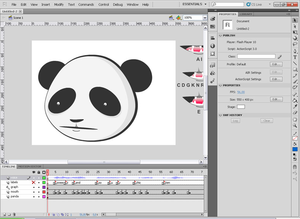
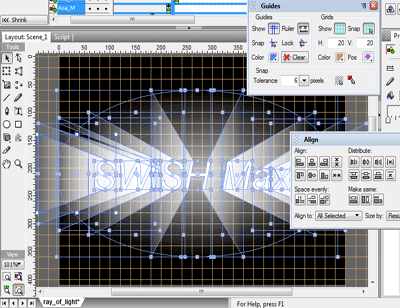
 You
want to be the supreme ruler of your own virtual cutting room? Better
break out the checkbook—your film-chopping powers aren't going to come
cheaply.
You
want to be the supreme ruler of your own virtual cutting room? Better
break out the checkbook—your film-chopping powers aren't going to come
cheaply.
Awesome article! https://ufo3d.com
ReplyDelete